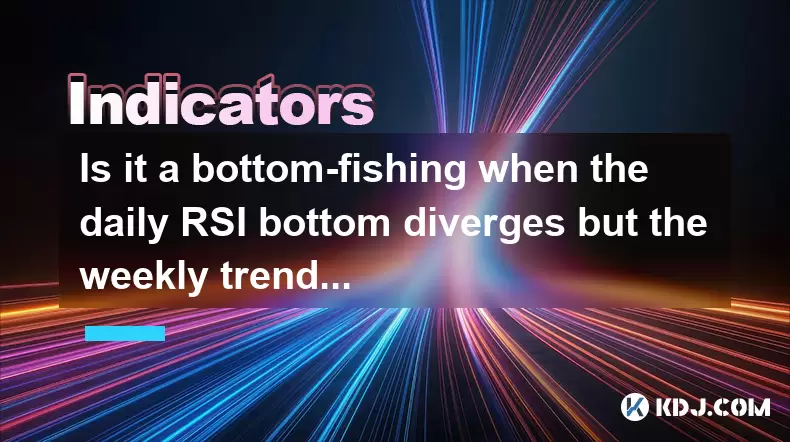-
 Bitcoin
Bitcoin $120400
1.77% -
 Ethereum
Ethereum $3615
7.90% -
 XRP
XRP $3.580
17.84% -
 Tether USDt
Tether USDt $1.001
0.06% -
 BNB
BNB $729.4
1.25% -
 Solana
Solana $179.9
5.04% -
 USDC
USDC $0.0000
0.01% -
 Dogecoin
Dogecoin $0.2311
8.22% -
 TRON
TRON $0.3226
4.04% -
 Cardano
Cardano $0.8490
12.85% -
 Hyperliquid
Hyperliquid $46.45
0.72% -
 Stellar
Stellar $0.4913
8.54% -
 Sui
Sui $4.027
2.00% -
 Chainlink
Chainlink $18.51
11.67% -
 Hedera
Hedera $0.2818
21.51% -
 Avalanche
Avalanche $24.03
7.40% -
 Bitcoin Cash
Bitcoin Cash $508.5
2.90% -
 Shiba Inu
Shiba Inu $0.00001496
3.24% -
 UNUS SED LEO
UNUS SED LEO $8.961
1.83% -
 Toncoin
Toncoin $3.264
3.13% -
 Litecoin
Litecoin $104.6
8.15% -
 Polkadot
Polkadot $4.389
6.11% -
 Uniswap
Uniswap $9.924
10.63% -
 Monero
Monero $337.9
0.49% -
 Pepe
Pepe $0.00001376
2.79% -
 Bitget Token
Bitget Token $4.830
2.46% -
 Ethena USDe
Ethena USDe $1.001
0.05% -
 Dai
Dai $1.000
0.02% -
 Aave
Aave $325.2
1.66% -
 Bittensor
Bittensor $423.7
-0.85%
Is it a bottom-fishing when the daily RSI bottom diverges but the weekly trend is downward?
A daily RSI divergence in crypto may signal short-term reversal potential, but it shouldn't override the dominant weekly bearish trend.
Jul 09, 2025 at 02:15 am

Understanding RSI Divergence in Cryptocurrency Trading
The Relative Strength Index (RSI) is a widely used technical indicator among cryptocurrency traders to assess overbought or oversold conditions. When the daily RSI shows a bottom divergence, it typically means that the price is making a lower low while the RSI makes a higher low. This kind of divergence often signals a potential reversal or at least a temporary pause in the downtrend.
In the context of cryptocurrency trading, this phenomenon raises an important question: can such a signal be trusted when the weekly trend remains bearish? It's crucial to understand that divergences are not foolproof indicators and must be interpreted within the broader market structure. The daily RSI divergence may indicate short-term weakness exhaustion, but it doesn't necessarily override the dominant longer-term trend.
Daily vs Weekly Trends in Crypto Markets
Cryptocurrency markets are known for their high volatility and multi-timeframe behavior. While the daily chart might show signs of bullish divergence, the weekly chart could still reflect strong bearish momentum. This discrepancy creates a conflict between short-term and long-term signals.
Traders should pay close attention to how price action interacts with key support and resistance levels across both timeframes. For instance, if the weekly trend continues downward without showing any significant signs of reversal, entering a trade based solely on a daily RSI divergence could be risky. In such cases, the weekly trend acts as the dominant force shaping price movement, and short-term signals may only offer limited countertrend opportunities.
How to Confirm RSI Divergence Signals
To increase the reliability of a daily RSI bottom divergence, traders should incorporate additional confirmation tools. One effective method is to check for confluence with other technical indicators such as moving averages, volume patterns, or Fibonacci retracement levels.
- Look for increased volume during the divergence formation as it suggests stronger buying interest.
- Check if the price is approaching a key Fibonacci level where reversals are more likely.
- Observe whether major moving averages like the 50 or 200-day SMA are aligning with the potential reversal.
By combining these elements with the RSI divergence, traders can filter out false signals and improve their probability of success. However, even with multiple confirmations, the overarching weekly trend must still be respected to avoid premature entries against the broader direction.
Risk Management Considerations
When considering a bottom-fishing attempt based on a daily RSI divergence in a weekly downtrend, risk management becomes even more critical. Traders should define clear stop-loss levels and position sizes before entering any trade.
- Set a tight stop-loss below the recent swing low to limit downside exposure.
- Use a favorable risk-reward ratio, ideally at least 1:2, to justify the trade despite the uncertain environment.
- Avoid over-leveraging, especially in highly volatile crypto assets, to prevent margin calls or emotional decision-making.
It’s also advisable to monitor news events, macroeconomic data, and regulatory developments that could influence the market sentiment and invalidate technical setups. In fast-moving crypto markets, being overly reliant on technical indicators without considering fundamental or news-driven factors can lead to significant losses.
Psychological Aspects of Bottom-Fishing
Trading psychology plays a vital role when attempting to catch a falling knife through strategies like bottom-fishing. The allure of buying at what appears to be a bargain price can cloud judgment, especially when the weekly trend remains firmly bearish.
Many traders fall into the trap of believing that a single indicator—like a daily RSI divergence—is sufficient justification for a trade. However, the reality of crypto markets is that trends can persist far longer than expected, and early entries often result in extended drawdowns before any reversal materializes.
Maintaining discipline by sticking to a predefined trading plan, avoiding emotional reactions to losses, and understanding that not every opportunity needs to be taken can significantly improve long-term outcomes. A daily RSI divergence should be viewed as one piece of the puzzle rather than a guaranteed setup.
Frequently Asked Questions
Q: Can I rely solely on RSI for spotting reversals in crypto markets?
No, the RSI should not be used in isolation. It works best when combined with other technical tools such as trendlines, moving averages, and volume analysis. Overreliance on RSI alone can lead to false signals, especially in volatile crypto environments.
Q: What is the ideal RSI setting for day trading cryptocurrencies?
While the default setting is 14, many traders adjust it to 7 or 10 for increased sensitivity in shorter timeframes. However, this also increases the likelihood of false signals. It’s essential to backtest different settings and adapt them according to your strategy and asset volatility.
Q: How do I differentiate between a real divergence and a fake one?
A real RSI divergence usually coincides with noticeable shifts in price behavior, such as reduced selling pressure, smaller candle bodies, or increasing volume on up days. Fake divergences often occur during consolidation phases and lack confluence with other indicators.
Q: Should I always follow the weekly trend when trading crypto?
Yes, the weekly trend provides valuable context and helps avoid trades that go against the larger market structure. Even if short-term indicators suggest a reversal, respecting the dominant trend can significantly reduce the risk of costly countertrend entries.
Disclaimer:info@kdj.com
The information provided is not trading advice. kdj.com does not assume any responsibility for any investments made based on the information provided in this article. Cryptocurrencies are highly volatile and it is highly recommended that you invest with caution after thorough research!
If you believe that the content used on this website infringes your copyright, please contact us immediately (info@kdj.com) and we will delete it promptly.
- Giants Protocol's G Token Live Launch: What You Need to Know
- 2025-07-18 21:30:13
- Solana, Rollblock, and the Gaming Token Revolution: What's Hot Now?
- 2025-07-18 22:10:13
- Crypto 2025: Will the Bull Run Be Led by Ethereum?
- 2025-07-18 22:10:13
- XRP, Dogecoin, and Crypto Bills: What's Shaking in the Crypto World?
- 2025-07-18 20:50:13
- Trump, Family Business, and Power: A New Era of Conflicts?
- 2025-07-18 20:30:12
- Trump, Business, & Bitcoin: A Crypto Capitalist's Vision
- 2025-07-18 20:40:12
Related knowledge

Advanced RSI strategies for crypto
Jul 13,2025 at 11:01am
Understanding the Basics of RSI in Cryptocurrency TradingThe Relative Strength Index (RSI) is a momentum oscillator used to measure the speed and chan...

Crypto RSI for day trading
Jul 12,2025 at 11:14am
Understanding RSI in the Context of Cryptocurrency TradingThe Relative Strength Index (RSI) is a momentum oscillator used to measure the speed and cha...

Crypto RSI for scalping
Jul 12,2025 at 11:00pm
Understanding RSI in the Context of Crypto TradingThe Relative Strength Index (RSI) is a momentum oscillator widely used by traders to measure the spe...

What does an RSI of 30 mean in crypto
Jul 15,2025 at 07:07pm
Understanding RSI in Cryptocurrency TradingRelative Strength Index (RSI) is a momentum oscillator widely used in cryptocurrency trading to measure the...

What does an RSI of 70 mean in crypto
Jul 13,2025 at 06:07pm
Understanding the RSI Indicator in Cryptocurrency TradingThe Relative Strength Index (RSI) is a widely used technical analysis tool that helps traders...

Does RSI work in a bear market for crypto
Jul 16,2025 at 01:36pm
Understanding RSI in Cryptocurrency TradingThe Relative Strength Index (RSI) is a momentum oscillator used by traders to measure the speed and change ...

Advanced RSI strategies for crypto
Jul 13,2025 at 11:01am
Understanding the Basics of RSI in Cryptocurrency TradingThe Relative Strength Index (RSI) is a momentum oscillator used to measure the speed and chan...

Crypto RSI for day trading
Jul 12,2025 at 11:14am
Understanding RSI in the Context of Cryptocurrency TradingThe Relative Strength Index (RSI) is a momentum oscillator used to measure the speed and cha...

Crypto RSI for scalping
Jul 12,2025 at 11:00pm
Understanding RSI in the Context of Crypto TradingThe Relative Strength Index (RSI) is a momentum oscillator widely used by traders to measure the spe...

What does an RSI of 30 mean in crypto
Jul 15,2025 at 07:07pm
Understanding RSI in Cryptocurrency TradingRelative Strength Index (RSI) is a momentum oscillator widely used in cryptocurrency trading to measure the...

What does an RSI of 70 mean in crypto
Jul 13,2025 at 06:07pm
Understanding the RSI Indicator in Cryptocurrency TradingThe Relative Strength Index (RSI) is a widely used technical analysis tool that helps traders...

Does RSI work in a bear market for crypto
Jul 16,2025 at 01:36pm
Understanding RSI in Cryptocurrency TradingThe Relative Strength Index (RSI) is a momentum oscillator used by traders to measure the speed and change ...
See all articles

























































































